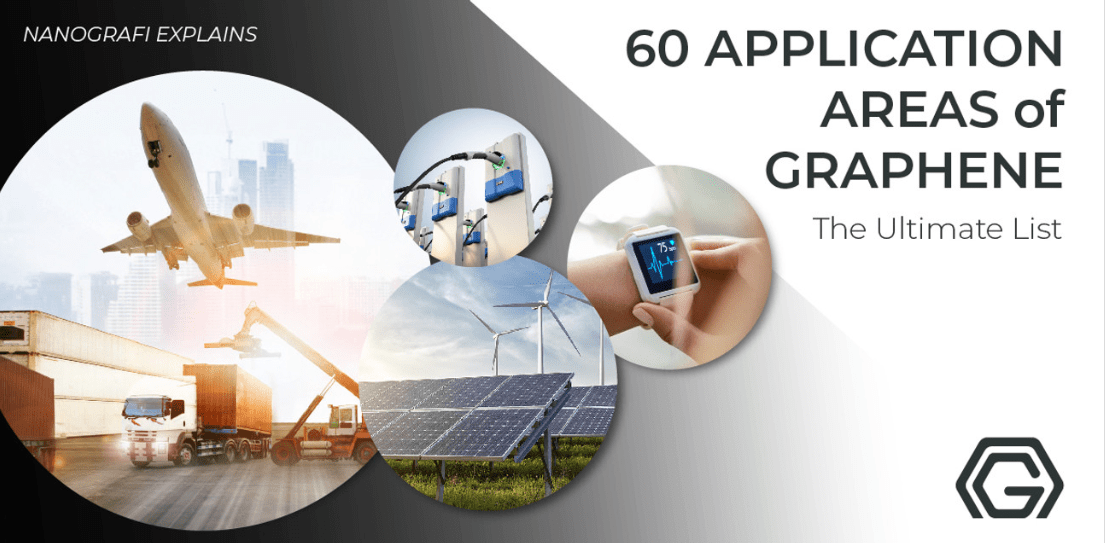How to Identify Fake Graphene?
Graphene is the newborn superstar of materials sciences. Hence the characterization, classification, production, and utilization of graphene and graphene based products have been at the center of attention in the last few decades. The potential properties of this wonder material have been theorized and simulated in several different studies.
However, achieving these properties has been a challenge due to the problems in achieving pristine graphene flakes. The production process of graphene greatly affects the quality and properties of graphene. Depending on the production method, different impurities or defects are observed in the graphene products. Since achieving optimum production conditions is difficult and expensive, most of the graphene products can fail to deliver what is promised on the label. This is why users should beware of the fake graphene. Combine quality and performance with Nanografi's graphene products and elevate your projects to the next level.
Introduction
Graphene, hailed as the 21st century's marvel material, showcases properties such as outstanding mechanical strength, chemical stability, and superior conductivity. However, while these attributes are often grounded in theoretical models, they can differ based on actual graphene quality in real-world applications. The surging demand for graphene has accelerated its production, but this rapid growth has sometimes compromised product quality. Some items marketed as graphene may merely be refined graphite powder. Thus, detecting these counterfeit graphene products necessitates a structured testing approach.
Properties of Graphene: An Overview
As outlined by the International Organization for Standardization (ISO), graphene is a unique 2D substance composed of a singular layer of carbon atoms set in a hexagonal pattern. This structure is officially recognized as single-layered graphene.
Different Types of Graphene
- Single-layered graphene: A monocrystal with carbon atoms in a hexagonal structure.
- Bilayer graphene: Consists of two layers.
- Few-layer graphene: Made up of a few layers but not exceeding ten.
- Multi-layered graphene: Contains more than a few layers but behaves like graphene up to ten layers.
The Attributes Defining Graphene Quality:
- Thickness or Number of Layers: This element is pivotal, as inherent qualities like malleability and tensile resilience vary with layer thickness.
- Carbon Composition and Bond Formation: Integral aspects dictating the overarching quality of graphene.
- Morphology: Refers to the formation, dimension, and configuration of graphene crystals.
Common Graphene Production Methods:
Chemical Vapor Deposition (CVD):
- A bottom-up approach.
- Uses hydrocarbon gas.
- Known for producing high-quality graphene films, given optimal conditions.
Liquid Phase Exfoliation of Graphite:
- A top-down method.
- Involves shear stress and sonication.
- Produces varied thickness, seldom yielding 100% monolayer graphene.
Oxidation and Reduction of Graphite (GO and rGO):
- Another top-down approach.
- Makes graphite layers easier to separate.
- Results can differ from pure graphene due to potential impurities.
Graphene's unique properties vary depending on its thickness and production method. While it's challenging to set a strict limit on acceptable thickness, thermodynamics suggest up to ten layers can behave as true graphene at room temperature. As the demand for graphene surges, ensuring its quality becomes paramount.
To discover about all the uses and applications of graphene, you can read our most popular blog.
Identifying Fake Graphene
Identification and Detection of Fake Graphene
Avoiding and identifying “fake” graphene have become an issue as the market has grown and proper quality standards have not been established. The lack of standards for graphene has been affecting the development of graphene applications negatively due to the bad quality of the material sold in the open market. Studies on graphene from different producers show that most graphene products are merely fine graphite powders. Identifying fake graphene requires a systematic test protocol involving several different test methods. This protocol established by Kauling et. al. includes the use of atomic force microscopy (AFM), X-ray photo electron spectroscopy (XPS), Raman spectroscopy, optical microscopy, scanning electron microscopy (SEM), and transmission electron microscopy (TEM). In the development of this protocol, the research group has investigated graphene products of 60 different companies. These technologies allow the investigation of graphene from every aspect. Atomic force microscopy is utilized to get information about the thickness of graphene flakes which is one of the most important features in categorizing the product. On the other hand, the size of the graphene flakes is observed through the use of optical microscopy. Raman spectroscopy takes an important role in identifying structural defects and any presence of GO or rGO providing a good idea about the quality of the product. Scanning electron microscopy and transmission electron microscopy provide further information on the morphology of the graphene product and help to confirm structural integrity. In addition to thickness, carbon content is also an important indicator of quality graphene products. The carbon content can be measure by utilizing X-ray photo electron spectroscopy.
Quality Issues of Graphene and Impacts of Fake Products on the Market
As a result of these quality control methods, quality graphene is expected to have a few nanometers of thickness, high carbon content close to 100%, and heavy sp2 bond density since crystalline graphene is expected to have 100% sp2 bonds. An unacceptable number of layers is often caused by production conditions. The low carbon content can be caused by contamination from the chemicals used in the production process. The content of sp3 bonds disturb the hexagonal structure of graphene lattice and result in structural defects. The reason for sp3 bonds could be absorbed hydrogen or the presence of transitional metals. Evidently, there are many factors affecting the quality of graphene products, and acquiring high quality requires a lot of effort, research, and investment. Furthermore, the characterization methods are complex and expensive for ordinary producers since the necessary equipment requires high technology to operate at nano scales. This is why companies can fail to deliver what is promised on the label and it is important to beware of fake graphene. The study of Kauling et. al. reports that none of the samples contained more than 50% of graphene at acceptable thickness. It is important to note that the study of Kauling et. al. does not include GO and rGO samples and a large number of the samples on the market labeled as graphene are actually GO and rGO.In order to reduce the amount of fake graphene out in the market, proper quality control mechanisms and improved production techniques must be established. On the other hand, it is important to realize that regardless of their thickness and impurities different versions of graphene products have useful purposes. The issue is mostly a quality control and labeling problem.
Conclusion
The standardization and quality of graphene products are crucial. The International Organization for Standardization set quality rules for graphene. Various tests identify counterfeit graphene. Although current technologies can't achieve ideal graphene quality, some companies might sell graphite as graphene. This can mislead scientific and technological endeavors. Hence, distinguishing fake graphene is vital.
Explore today the cutting-edge nanomaterials of Nanografi, the closest follower of global science and scientific trends, today.
References
A New Phase in Twisted Double Bilayer Graphene and High-Temperature Superconductivity - Nanografi Nano Technology. (n.d.). Retrieved February 8, 2024, from https://nanografi.com/blog/a-new-phase-in-twisted-double-bilayer-graphene-and-hightemperature-superconductivity/
Atomic force microscopy - Wikipedia. (n.d.). Retrieved February 8, 2024, from https://en.wikipedia.org/wiki/Atomic_force_microscopy
Bøggild, P. (2018). The war on fake graphene.
Chemistry news, research and opinions | Chemistry World. (n.d.). Retrieved April 1, 2020, from https://www.chemistryworld.com/opinion/an-indepen...
Graphene’s Potential as a High Performance Surfactant - Nanografi Nano Technology. (n.d.). Retrieved February 7, 2024, from https://nanografi.com/blog/graphenes-potential-as-a-high-performance-surfactant/
International Organization for Standardization (ISO), in Nanotechnologies – Vocabulary – Part 13: Graphene and Related Two-Dimensional (2D) Materials, BSI Standards Publication, London, UK 2017
Kauling, A. P., Seefeldt, A. T., Pisoni, D. P., Pradeep, R. C., Bentini, R., Oliveira, R. V., ... & Castro Neto, A. H. (2018). The worldwide graphene flake production. Advanced Materials, 30(44), 1803784.
Raman spectroscopy - Wikipedia. (n.d.). Retrieved February 8, 2024, from https://en.wikipedia.org/wiki/Raman_spectroscopy
60 Uses and Applications of Graphene – Nanografi - Nanografi Nano Technology. (n.d.). Retrieved February 8, 2024, from https://nanografi.com/blog/60-uses-and-applications-of-graphene-nanografi-/
Recent Posts
-
Nanocomposites in Food Packaging
The utilization of nanocomposites in food packaging represents a significant advancement in the fiel …19th Apr 2024 -
What is the Difference Between 7075 and 6061 Aluminum Alloy?
When comparing 7075 aluminum alloy to 6061 aluminum alloy, it's essential to understand their disti …5th Apr 2024 -
Iron-Air Batteries: The Ultimate Guide
Iron-air batteries represent a significant breakthrough in energy storage technology, offering a sus …29th Mar 2024







